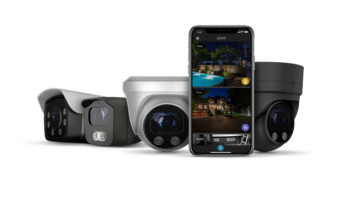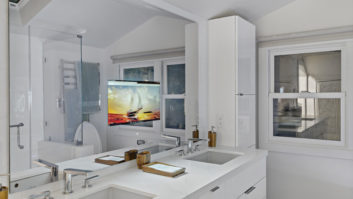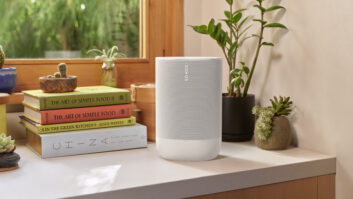As incredible as it may seem, it has only been 10 years since the release of the original Apple iPhone, and to say that single device has changed our industry more than any other would be a massive understatement. Not only did it put a bandwidth-hungry personal computer into the hands of millions of homeowners and their families, but it also paved the way for today’s connected home. After all, who could have imagined, before the advent of that little handheld revolution, that one day nearly every AV receiver would come equipped with a network connection, much less that custom home automation would soon cost less than a luxury car? The job of the custom integrator has changed more in the past decade than it did in all of the preceding decades up to this point.

And it’s still evolving at an ever-increasing pace. More than merely a necessary part of the connected home, the home network is the very foundation on which every reliable connected home is built. More so than any other component of the connected home, the network can make all the difference in terms of reliability, scalability, and a pleasurable day-to-day user experience.
There are a few things to keep in mind to ensure that you’re delivering the most robust and secure foundation you can for every project no matter the size. First things first, understand the needs and requirements of your customer. These days, it simply isn’t enough to consider the size of a home and the number of connected devices when designing the right network for a client. Install the exact same network in the exact same floorplan for two different users, and one may be working just fine two years from now while the other is bursting at the seams. Before you make any decisions about the network, it’s important to develop a better understanding of your clients, their lifestyles, and their needs, both today and tomorrow.
Questions to ask your clients include: How dependent are you on the network? How many people in your household depend on the network? What types of smart devices do you have in the home, and what else do you see adding to the network down the road? Do you commonly have devices streaming video or audio simultaneously across the house? How important is outdoor coverage? Do you have any aesthetic requirements that we need to consider, such as a preference for hidden versus flush ceiling-mounted wireless access points?
The answers to these questions will help you in designing a network that is best suited for your customers’ specific needs. In addition, you will likely find that many of your customers’ lifestyles and smart home needs will be very similar in nature. To assist you in designing a network that best fits the requirements and lifestyle of your customer’s home, you may want to separate the connected home into three categories: the basic connected home, advanced connected home, and the managed connected home.
The basic connected home likely covers the majority of your customers. This category supports multiple sources of audio and video streaming, a few additional smart devices such as thermostats and smart lighting control, and a basic automation solution controlling them. Unless the client subscribes to a Gigabit internet service, the majority of connected homes are probably best served by a basic professional-grade router–one that supports up to 300 Mbps–along with unmanaged switches for hardwired devices around the home, as well as wireless-AC wireless access points (WAPs) for complete wireless coverage to every corner of the home. For an apartment, condo, duplex, or townhouse with modest home automation and AV systems, this type of system will deliver night-and-day performance advantages over what your clients are used to with off-the-shelf solutions.
The advanced connected home takes things to the next level, and is for the tech-savvy client who wants reliable multi-room music and video, in addition to a more extensive control solution that might include IP-based security cameras, audio and video intercom, IP phones, more extensive automated lighting, blinds, and advanced climate control. At this level, you will need a more advanced routing solution capable of supporting 500 Mbps to Gigabit speeds, as well as managed switches for enhanced network traffic management, such as virtual local area networks (VLANs) for keeping all of the various types of network traffic in their own lanes. Unmanaged switches may be used to extend and group end devices such as IP cameras on the edge of the network.
The managed connected home isn’t distinct from the basic and advanced connected home in terms of the number and types of connected devices in the home, but rather offers an additional layer of support and functionality: professional remote management and monitoring. This type of network is designed for the customer who demands the very best in terms of performance and reliability, no matter how large or small the job. For the custom integrator, a robust remote management and monitoring tool can make all the difference between a happy client and a never-ending barrage of angry phone calls.
For customers who are used to off-the-shelf network solutions, one of the biggest differences that your customer will notice with their newly designed network is wireless performance and reliability, so be sure to give Wi-Fi the right amount of attention and planning. While a wireless-AC WAP with a 2×2 MIMO antenna is a good solution for most basic connected homes, for the advanced connected homes you’ll want to consider upgrading to a wireless-AC 3×3 MIMO WAPs for extended coverage, faster speeds up to 1750 Mbps, and support for more simultaneous connected devices. Choosing the right number of WAPs and determining proper placement to ensure that devices have a smooth handoff when moving from one area of the home to another is also extremely important for a rock-solid wireless experience. Too many access points can be just as problematic as too few; either can result in signal drops or poor handoffs.
Wireless security is also essential for a good wireless experience. Make sure you are assigning the SSIDs (Service Set Identifier, or the unique name for your wireless network) with the latest security encryption (we recommend WPA2 PSK). With a better networking solution, you can also count on features like MAC filtering to block untrustworthy devices from the network, as well as Wi-Fi scheduling to automatically disable the wireless network after hours (for both security and parental control).
Guest networks are also a great way to keep your customers’ networks secure. For homeowners who frequently entertain, a guest network gives them a separate wireless connection independent of their home network. This limits visitors to internet access only, with no connection to your clients’ personal data or devices in and around the home.
No matter how sophisticated and reliable your network is, hiccups and unforeseen problems are going to arise from time to time with any smart home system. ISP connectivity may be unreliable at times. Or maybe you have one pesky device that needs frequent reboots to operate reliably. Remote management allows you to stay one step ahead of these problems.
Remote management also greatly enhances the security of the home network. Firmware is generally the biggest Achilles heel in network security, after all, and though most networking manufacturers do a good job of finding and eliminating potential security exploits, if those updates aren’t installed they aren’t doing their job. With a remote management tool like BakPak, you can remotely push firmware and updates to your customer’s networks without ever leaving your office, keeping your customer’s network up-to-date and secure.
Brad Hintze is senior director of product marketing for Control4.







